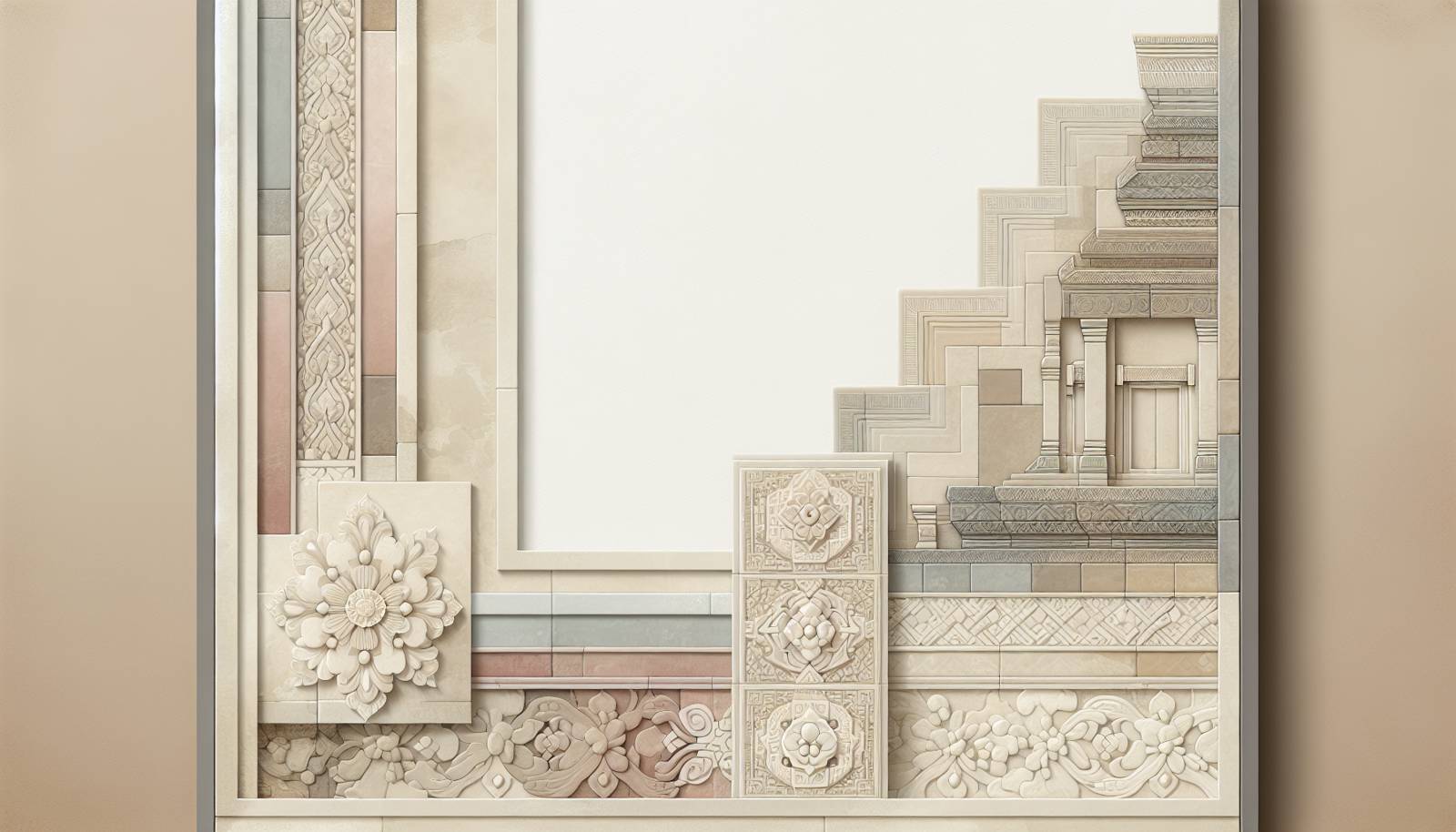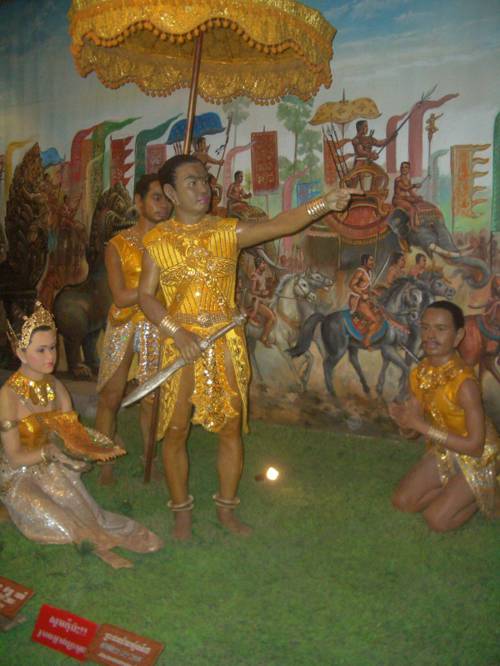
FAQ About Jayavarman VII

Who was Jayavarman VII?
Jayavarman VII was a king of the Khmer Empire in present-day Cambodia, reigning from around 1181 to 1218. He is widely regarded as one of the greatest and most successful rulers due to his extensive temple-building programs and public works projects. His reign marked a significant period of prosperity and cultural development in Cambodia.

What is Jayavarman VII known for?
Jayavarman VII is best known for his monumental temple-building projects, including Bayon and Ta Prohm, and his establishment of Angkor Thom as the empire's capital. He also implemented numerous public works, such as roads, hospitals, and reservoirs, to improve the welfare of his people.

What were the significant architectural contributions of Jayavarman VII?
Significant architectural contributions of Jayavarman VII include the Bayon temple, known for its massive stone faces; Ta Prohm, which was left in its natural state with trees growing amidst the ruins; Preah Khan; and the walled city of Angkor Thom, which became the empire's capital. These constructions are renowned for their artistic and architectural ingenuity.

How did Jayavarman VII impact the Khmer Empire?
Jayavarman VII had a profound impact on the Khmer Empire by consolidating its territorial expansion and strengthening its religious and cultural presence. His focus on extensive infrastructure development, including roads and hospitals, significantly improved the quality of life for his subjects and fostered economic prosperity.

Why is Angkor Thom significant in Jayavarman VII's reign?
Angkor Thom was significant because it served as the capital city during Jayavarman VII's reign. Its design reflected his Buddhist beliefs and was marked by an impressive architectural layout that included major monuments like the Bayon temple at its center, symbolizing the intersection of spiritual and political power.

What religious beliefs influenced Jayavarman VII's rule?
Jayavarman VII was a devout follower of Mahayana Buddhism, which influenced much of his rule and his building projects. His religious beliefs were reflected in the construction of Buddhist temples and conversions of existing Hindu temples, emphasizing compassion and service to his subjects.

How did Jayavarman VII's public works projects benefit his people?
Jayavarman VII's extensive public works projects, including the construction of roads, bridges, hospitals, and reservoirs, greatly benefited his people by improving infrastructure, health, and agricultural productivity. These initiatives helped create a strong, centralized state capable of supporting a large population.

What is the architectural style of the Bayon temple?
The Bayon temple is famous for its unique architectural style characterized by numerous serene and smiling stone faces carved into its towers. It blends Buddhist and Hindu iconography and serves as the central temple in Jayavarman VII's capital, Angkor Thom, symbolizing his dedication to Mahayana Buddhism.

Was Jayavarman VII's reign considered prosperous?
Yes, Jayavarman VII's reign is considered one of the most prosperous periods in Khmer history. His effective administration, monumental construction projects, and focus on public welfare led to a thriving and prosperous empire with significant cultural, religious, and economic advancements.

What is Ta Prohm, and why is it famous?
Ta Prohm is a temple built during Jayavarman VII's reign, famous for being left in much the same condition in which it was found, with trees growing amidst its stone ruins. This gives it a romantic and atmospheric appearance that has captured the popular imagination, making it a favorite site for visitors to Angkor.

How did Jayavarman VII become king?
Jayavarman VII likely became king after a period of political instability following the Cham invasion of the Khmer capital city of Angkor. His leadership in defending the country from foreign threat and his subsequent military successes helped to establish and legitimize his reign.

What was the role of Buddhism in Jayavarman VII's rule?
Buddhism played a central role in Jayavarman VII's rule, as it influenced his policies and constructions. He dedicated many temples to Buddhism, and the spiritual and ethical teachings of Buddhism were reflected in his emphasis on public welfare and social projects.

Did Jayavarman VII convert any Hindu temples into Buddhist ones?
Yes, Jayavarman VII did convert several Hindu temples into Buddhist shrines. This was part of a broader trend during his reign to promote Mahayana Buddhism, which became the dominant religion of the Khmer Empire at the time.

Where is Angkor Thom located?
Angkor Thom is located near modern-day Siem Reap in northwestern Cambodia. It was the last and most enduring capital city of the Khmer Empire, centered around the Bayon temple.

What challenges did Jayavarman VII face during his reign?
Jayavarman VII faced significant challenges, including the threat from neighboring Champa, which had invaded and sacked the Khmer capital before his reign. He also had to consolidate his power within the empire and address various internal dissent and regional instabilities.

How did Jayavarman VII's reign end?
The precise details of Jayavarman VII's later years and death remain somewhat unclear, but it is believed that he either died or abdicated around 1218. The legacy he left behind continued to influence the region for generations.

What influence did Jayavarman VII's public health initiatives have?
Jayavarman VII's public health initiatives, including building hospitals throughout the empire, were unprecedented in their scope and ambition. They contributed to the health and welfare of his subjects, aligning with his Buddhist beliefs of compassion and service.

How did Jayavarman VII's architecture influence later Cambodian history?
The architectural legacy of Jayavarman VII influenced later Cambodian history by establishing a standard of artistic accomplishment and religious expression. His integration of Buddhist elements into Khmer temples set a pattern that would be mimicked in subsequent periods.

What is Preah Khan, and what was its purpose?
Preah Khan is a temple complex built by Jayavarman VII, which served both a religious and administrative function. It was dedicated to Buddhist and Hindu deities and also operated as a monastery and learning center, reflecting the king's advocacy for education and religion.

Which other structures did Jayavarman VII contribute to besides temples?
Besides temples, Jayavarman VII contributed to the construction of extensive infrastructure, including roads, bridges, and reservoirs. These projects facilitated trade, improved agriculture through better irrigation, and enhanced connectivity across his empire.
